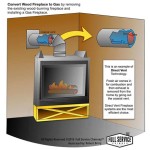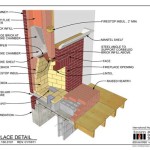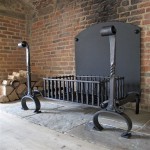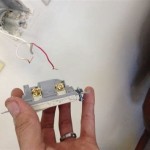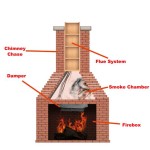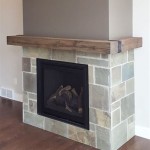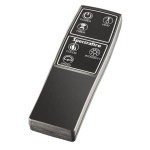Propane Fireplace Corner Unit: Enhancing Homes with Warmth and Ambiance
The propane fireplace corner unit represents a popular choice for homeowners seeking both aesthetic appeal and functional heating solutions. These units are designed to fit neatly into a corner of a room, maximizing space utilization while providing a focal point that draws attention and creates a cozy atmosphere. Unlike traditional wood-burning fireplaces, propane fireplaces offer convenience, efficiency, and cleaner emissions, making them a practical and environmentally conscious option for modern homes.
The integration of a propane fireplace corner unit necessitates careful consideration of various factors, including venting options, installation requirements, fuel source availability, and desired aesthetic. Understanding these aspects is crucial for ensuring a safe and satisfactory installation that meets both functional and design expectations. This article will explore the key features, benefits, and considerations associated with propane fireplace corner units, providing a comprehensive overview for prospective buyers and current owners alike.
Space Optimization and Design Flexibility
One of the primary advantages of a propane fireplace corner unit lies in its ability to optimize space within a room. By fitting seamlessly into a corner, these units free up valuable wall space and floor area that might otherwise be occupied by a traditional fireplace or other furniture. This feature is particularly beneficial in smaller rooms or homes where maximizing usable space is a priority.
The corner placement also offers significant design flexibility. It allows homeowners to create a distinct focal point without dominating the entire wall. This can be especially appealing in open-concept living spaces where a corner fireplace can help define different zones within the larger area. The angled design of the corner unit directs heat and light towards the center of the room, promoting even distribution and creating a more inviting environment.
Furthermore, propane fireplace corner units are available in a variety of styles and finishes, ranging from traditional to contemporary. This allows homeowners to select a unit that complements their existing décor and architectural style. Options include various mantel designs, surround materials (such as stone, brick, or wood), and firebox configurations. These customizable features ensure that the fireplace corner unit can be seamlessly integrated into any home's aesthetic.
Beyond the standard designs, custom corner units can also be built to meet specific homeowner preferences. This allows for even greater design flexibility, enabling the creation of a truly unique and personalized fireplace feature. Customization options may include unique mantel designs, integrated shelving or storage, and tailored trim work to match the surrounding room's architectural details.
Benefits of Propane Fuel
The use of propane as a fuel source for these fireplaces offers numerous advantages over traditional wood-burning options. Propane is a clean-burning fuel, producing significantly fewer emissions than wood. This makes it a more environmentally friendly choice, reducing air pollution and contributing to a healthier indoor air quality.
Another key benefit of propane is its convenience. Unlike wood, propane requires no storage, chopping, or hauling. The fuel is typically stored in a tank located outside the home, and a gas line connects the tank to the fireplace. This eliminates the mess and hassle associated with wood storage and handling.
Propane fireplaces also offer superior control over heat output. Most units are equipped with adjustable thermostats that allow users to regulate the flame size and heat intensity. This provides precise temperature control, ensuring a comfortable and consistent level of warmth. Wood-burning fireplaces, on the other hand, are much more difficult to control, often resulting in fluctuating temperatures and uneven heating.
Moreover, propane fireplaces are known for their ease of use. They typically feature simple ignition systems that require only the push of a button or the flip of a switch to start. This eliminates the need for kindling, matches, and careful tending of the fire. For homeowners seeking a hassle-free heating solution, propane fireplaces offer a significant advantage over wood-burning alternatives.
Additionally, propane fireplaces can operate during power outages, provided they are equipped with a battery backup system. This can be especially valuable in areas prone to severe weather or power disruptions, providing a reliable source of heat and light when other heating systems are unavailable. The ability to function independently of the electrical grid enhances the fireplace's practicality and versatility.
Installation Considerations and Venting Options
Proper installation is critical for ensuring the safe and efficient operation of a propane fireplace corner unit. It is highly recommended that installation be performed by a qualified and licensed professional who is familiar with local building codes and regulations. Incorrect installation can lead to gas leaks, carbon monoxide poisoning, or other safety hazards.
One of the most important aspects of installation is the venting system. Propane fireplaces require a properly installed vent to exhaust combustion gases safely outside the home. There are two primary venting options: direct vent and vent-free. Direct vent systems draw air from outside the home for combustion and exhaust gases directly outside through a sealed vent pipe. This type of system is considered the safest and most efficient option. Vent-free systems, on the other hand, do not require a vent. They draw air from inside the home for combustion and release combustion gases directly into the room. While vent-free systems can be easier and less expensive to install, they may contribute to indoor air pollution and require careful monitoring of carbon monoxide levels.
The choice of venting system depends on various factors, including the fireplace model, building codes, and homeowner preferences. It is essential to consult with a qualified installer to determine the most appropriate venting option for a particular situation. Local building codes often dictate the types of venting systems that are permitted in a given area.
In addition to venting, the installation process also involves connecting the fireplace to the propane gas line. This task should only be performed by a qualified gas fitter. The gas line must be properly sized and installed according to local codes to ensure a safe and reliable supply of propane to the fireplace. Leak testing is also crucial to verify the integrity of the gas line and prevent gas leaks.
Finally, the placement of the propane tank must be carefully considered. The tank should be located outside the home in a well-ventilated area, away from potential ignition sources. Local regulations often specify minimum distances that the tank must be from buildings, property lines, and other structures. Proper installation and maintenance of the propane tank are essential for ensuring the safe and reliable operation of the entire fireplace system.
Regular maintenance of a propane fireplace corner unit is essential for ensuring its continued safe and efficient operation. This includes periodic inspections of the venting system, gas lines, and burner components. It is recommended to have the fireplace professionally inspected and serviced at least once a year. Proper maintenance can help prevent gas leaks, carbon monoxide buildup, and other potential safety hazards.
In conclusion, propane fireplace corner units offer a combination of aesthetic appeal, functional heating, and environmental benefits. Their space-saving design, clean-burning fuel source, and ease of use make them a popular choice for homeowners seeking a convenient and efficient fireplace solution. However, careful consideration of installation requirements, venting options, and safety precautions is essential for ensuring a safe and satisfactory experience. Consulting with qualified professionals and adhering to local building codes are critical steps in the process of selecting and installing a propane fireplace corner unit.

Corner Ventless Gas Fireplace Visualhunt

Lx2 Corner Gas Fireplace Left Propane The Center

Corner Ventless Gas Fireplace Visualhunt

Empire Corner Cabinet Mantel With Base For Vfd26fp Fireplaces

1 Corner Fireplace Dealer Electric Fireplaces On Now
Corner Two Sided Gas Fireplace Heat Glo

Chicago Corner 40re Designer Gas Fireplace Regency

Corner Ventless Gas Fireplace Visualhunt

Discover The 61 Best Corner Fireplace Designs In 2024 Living Room Gas

Majestic Corner Direct Vent Gas Fireplace L R Cor Dv36in North Country Fire
Related Posts

